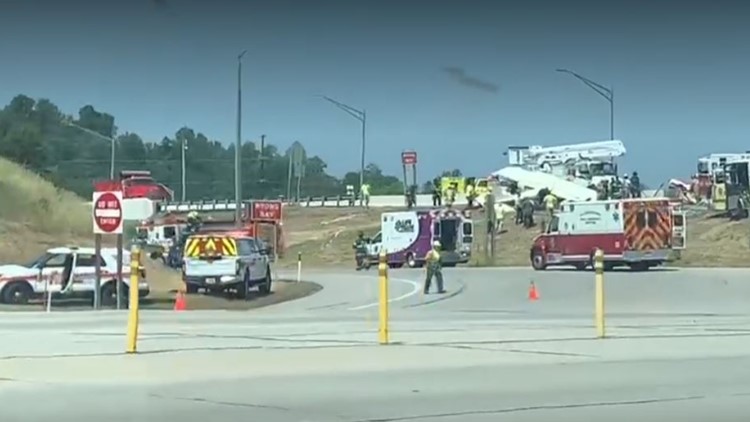HARRISBURG, Pa. — A preliminary report into the fatal plane crash on May 31 was released Friday.
According to the National Transportation Safety Board (NTSB), the Cessna 180, N3178D, was damaged when it was involved in a crash near Harrisburg. The airline transport pilot was seriously injured and the passenger was killed.
The airplane was operated as a Title 14 Code of Federal Regulations Part 91 personal flight.
Due to his immediate injuries, the pilot was not available for an interview. A preliminary report revealed that the airplane was on its final leg of a 3-leg, cross-country flight originating from the pilot's home airport in Fredericksburg.
The pilot was receiving visual flight rules following services when he announced an intention to divert to Capital City Airport (CXY), which was about nine miles ahead of the airplane along its route of flight.
Within five miles of CXY, the pilot announced the airplane had experienced engine failure. The airplane was aligned for landing on runway 08 when it collided with terrain and a utility vehicle one mile short of the runway in a highway interchange toll plaza.
Prior to the pilot's departure, the airport owner reportedly observed the pilot servicing his airplane with fuel. Preliminary information revealed the pilot flew the plane for about 1.2 hours before landing and parking the airplane at Brokenstraw Airport in Pittsfield, Pa.
The airport's owner recalled seeing a Cessna 180 or 185 and was certain that the airplane was not serviced with fuel.
The airplane then departed around 10:28 a.m. and flew for about 1.2 hours before the pilot landed and parked at a private grass strip in Rowlesburg, West Virginia. In a telephone conversation, the property owner said that he was not on the property that day, but that fuel was not available at his airstrip.
The plane then departed the grass strip at about 1:24 p.m. and flew about 1.2 hours before the track data ended in the vicinity of the crash site at 2:35 p.m.
In written statements, several witnesses described the engine sound as "erratic, sputtering, cutting in and out [and] losing power, then it would come back and go off again," as the airplane passed overhead the crash site.
The pilot reportedly held airline transport pilot, flight engineer, and flight instructor certificates with multiple ratings in both single- and multi-engine airplanes.
According to FAA and maintenance records, the airplane was manufactured in 1955 and was powered by a Continental O-470-J, 225-horsepower engine. The airplane’s most recent annual inspection was completed on Oct. 24, 2022, at 5,089 total aircraft hours.
The engine compartment was displaced to the right and forced back into the cockpit area, the NSTB report states.
The firewall and instrument panel were destroyed. A significant amount of structure was cut and moved by rescue personnel to extract the occupants.
A mechanic confirmed control continuity from the flight controls to all the flight control surfaces before removing the wings in order to transport the wreckage.
According to the report, there was no evidence of fuel or fuel spillage at the site, but there was an odor of fuel present. The engine exhibited minimal impact damage.
The victim was later identified by Dauphin County officials as Lawrence Sager, 74, of Harrisburg. Sager died of injuries sustained in the crash at 4:52 p.m. at UPMC Harrisburg Hospital.



